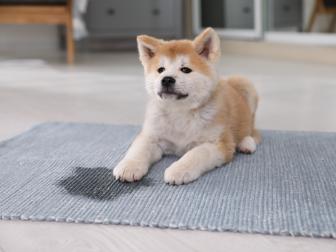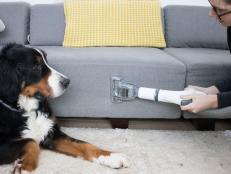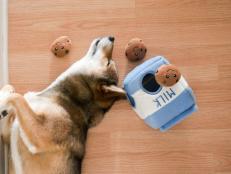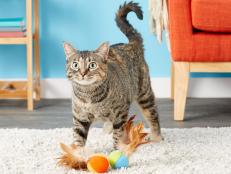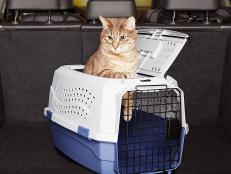How to Clean Cat Urine Stains and Eliminate Odors
Cat urine is always a challenge to clean, but before you lose hope, try these techniques and solutions to combat stains and deep-set smells.

All cat owners share a similar battle when it comes to maintaining a clean, fresh home. Even the cleanest of homes with the cleanest of indoor cats still face occasional accidents, territorial marking and trouble with litter boxes. Trained cats peeing outside of a litter box can also indicate health issues. The unpleasant smell of cat urine is a tough one to combat.
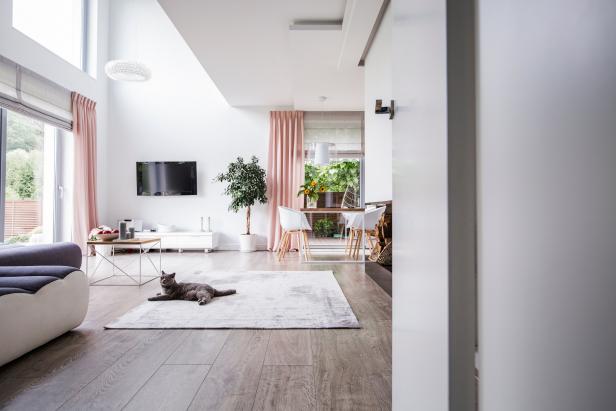
Shutterstock/Photographee.eu
Cleaning cat pee starts with having a great stash of paper towels, absorbent cloths and simple cleansers, but sometimes it’s necessary to tackle scents with tougher cleaning solutions.
The most important thing to remember is that you must thoroughly eliminate the smell. If there’s a lingering urine scent, not only will you notice, but the cat will be drawn back to the same spot to urinate again.
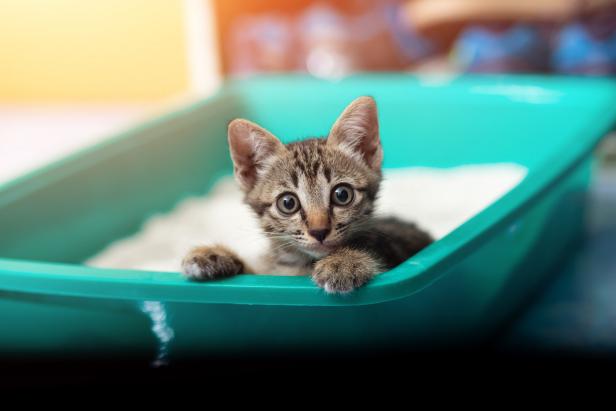
Shutterstock/Boonlert Saikrajang
Common Cleaning Options Include:
- enzyme carpet cleaner
- dish soap
- baking soda
- white vinegar
- hardwood floor cleaner
- tile cleaner
- paper towels and other absorbant cloths
Cleaning Hard Surfaces
Hard surfaces are the easiest to clean, but if the surface is porous, it’s important to act quickly. Unsealed tiles, tile grout and hardwood floors are porous “hard” surfaces that are easily damaged by cat urine.
Sealed tiles and grout can usually be cleaned thoroughly with dish soap and water or a 1:1 mixture of water and white vinegar. Allow it to sit on the tile for 15 minutes and then scrub and dry the tile.
Grout cleanser is necessary for cleaning affected tile grout that isn’t sealed.
To clean hardwood floors or wooden furniture, opt for a wood cleaner. Hardwood floor cleaners are gentle to protect floor waxes and finishes and will protect against further damage. Ignored cat urine or poorly cleaned urine not only will absorb between floorboards, but it will begin to eat away at the finish as well.
Cleaning Upholstery
Upholstery is absorbent, and any absorbent material is notably hard to protect and clean. Blotting and extracting the urine is important to success. Remove and launder or dry clean any slipcovers and blot aggressively on cushions and padding where cat pee has absorbed.
Once you’ve absorbed as much of the urine as possible, use an enzymatic cleaner or cat urine remover. These cleaners are more powerful than dish soap and detergent. They are formulated to thoroughly break down the remaining urine, and the enzymes actually “eat” the urine to eliminate the stain. Note that different cleansers have different instructions. Some may require you to let it dry as-is while others may require you to remove residual foam.

Shutterstock/Kristi Blokhin
Cleaning Carpets
Just like with upholstery, the more urine you can absorb from the carpet, the easier it’ll be to clean the affected fibers and combat the smell. Use absorbent paper towels to extract as much urine as possible from the carpet fibers. Then, use the enzymatic cleaner to deep clean the affected area. As with the cleansing treatment recommended for upholstery, you may find that different cleansers have different instructions.
If you’re cleaning an area rug, you should also lift the rug and place newspaper or paper towels underneath to absorb the pee from the underside. If you have a carpet pad, try to absorb the liquid before it reaches the padding.
Allow everything to dry completely after treatment. Once it’s dry, you may also want to sprinkle a generous amount of baking soda onto the carpet to continue to treat the area. Let the baking soda sit and absorb any remaining odors for several hours (or even overnight) and then vacuum.
If the smell lingers, consider renting a professional-strength steam cleaner or hiring a company to deep clean the carpets. Area rugs can be rolled and taken to a dry cleaner for a deeper, gentle treatment.
How to Remove Pet Stains From Carpet
Urine or vomit on carpet can be a pet owner's worst nightmare. Here's how you can clean some of the most common pet messes without too much stress.
Tips to Reduce Accidents
A trained cat having continuous accidents can signal a number of problems, from territorial issues to simply needing more litter boxes at home. It’s commonly suggested to have one litter box per cat, plus one extra, so if you have two cats, aim to have three available litter boxes.
Cats may also be particular about the location of the litter box or its accessibility. Don’t rule out moving the litter box to a new location, especially if the cat seems to be marking in one specific area of the house.
Some cats are picky about the type of litter they use or the cleanliness of their litter box. If you can’t commit to a daily cleaning routine, self-cleaning litter boxes may be just the trick you need to make the litter box more welcoming to the cat.
When in doubt, talk to your pet’s veterinarian. Frequent accidents can signal health or behavioral issues.
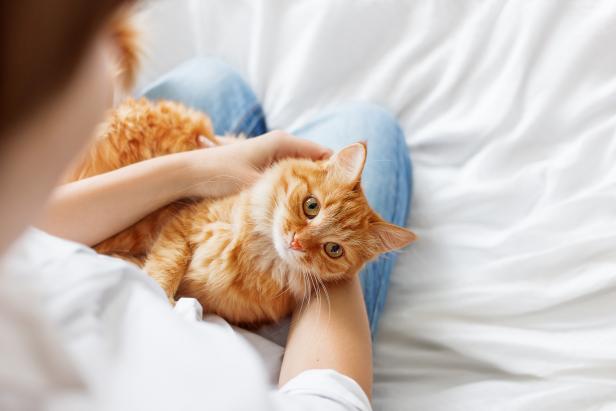
Shutterstock/Konstantin Aksenov
More Tips for Pet Owners
13 Cleaning Tips for Pet Parents 13 Photos
Spend more time cuddling with your furry family members and less time cleaning up after them with these pointers.
The Best Floor Cleaners for Pets
These machines are made for tackling tough pet messes on carpet, hardwood, tile and more.
32 Pet Products HGTV Editors Swear By
Browse the buys that have a stamp of approval from us and our four-legged pals.






